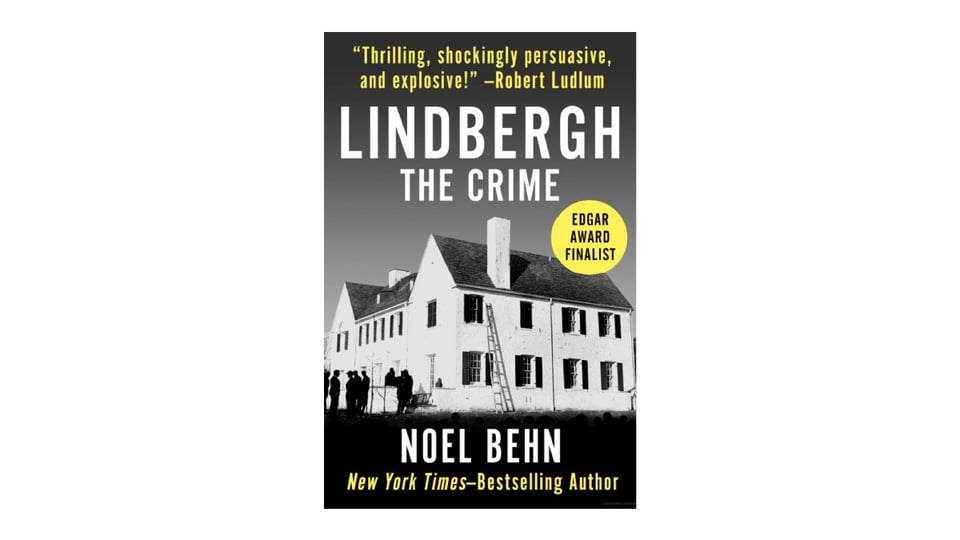Looking back at Lindbergh: The Crime
the true crime that's worth your time

Paid Best Evidence supporters get every review in their inbox, and free subscribers can click through to read.
Over the course of the summer, we’ll be doing a look back at the 1994 Edgar Award nominees for Best Fact Crime. These titles, published in 1993, include a classic chronicling one of true crime’s most infamous divorces and its aftermath, a sweeping Texas murder saga, a psychological study of a serial killer and the communities he targeted, and two child kidnapping cases (one extremely well known, the other less so). Are any of these titles worth a read 31 years on?
Our first 1994 Edgar nominee is Lindbergh: The Crime by Noel Behn.
The Crime
It’s hard to imagine this one is unknown to many, but on March 1, 1932, the patronymically named infant son of famed aviator Charles Lindbergh and his wife Anne Morrow Lindbergh was abducted from his nursery at the family’s New Jersey estate. The kidnapper(s) left a ransom note demanding $50,000 on the nursery windowsill, and other clues at the scene included a handmade ladder and lone footprint in the ground. What followed was a media circus, a cat and mouse game between an intermediary and a representative of the group claiming to be the kidnappers, and a winding investigation after a truck driver found the child’s corpse nearby two months later. Ultimately, a German immigrant and carpenter named Bruno Richard Hauptmann was convicted and executed for the crime.
The Story
Behn makes his perspective clear early on in Lindbergh: The Crime, positing that Charles Lindbergh Jr. was not kidnapped the night the public was lead to believe, Hauptmann was innocent, and the real culprit was a member of the Lindbergh family circle. I don’t have much experience with Lindbergh conspiracy theories – my greatest exposure to the case comes from Bill James’ Popular Crime and The Cases That Haunt Us by John E. Douglas and Mark Olshanker (both of which come down squarely on the side of Hauptmann’s involvement), but I understand books suggesting alternate theories of the kidnapping were somewhat of a cottage industry in the decades following the crime as materials associated with the investigation came to light.
The bulk of Lindbergh: The Crime is a relatively straightforward re-telling of Lindbergh’s ascension, the kidnapping, investigation, ransom negotiations, Hauptmann’s trial and disorganized defense, and efforts to stave off the execution. Behn points out the many ways Lindbergh’s celebrity influenced the investigation and how deference to him led to major mistakes and missed opportunities (i.e. Lindbergh’s refusal to let the police interview his wife or members of the family’s staff, his initial resistance to having the ransom bills marked). Behn takes it further though – asserting that this was all by design. If Lindbergh knew there was no real kidnapping, his actions can be interpreted as intentionally designed to make the press, public, and police look in the wrong direction.
Finally, in Book 5 of Lindbergh: The Crime (370 pages in), Behn lays out his theory. There was no kidnapping, the child actually died three days before he was reported missing, and Charles and Anne Lindbergh were not at the estate when the death occurred. Sometime after the child’s death over the weekend of February 27, a conspiracy was born to report Lindbergh Jr. as kidnapped.
And whom were the Lindberghs aiming to protect? Behn’s theory is that Anne’s sister Elisabeth, jealous that her sister won the affection of Charles, killed their child. Lindbergh staged the kidnapping in order to protect Elisabeth’s (and the family’s) reputation. Most of the “evidence” to back up this theory lays in Behn’s assertion that his deep dive into the case archives show that former New Jersey Governor Harold Hoffman, who led the effort to exonerate Hauptmann, had a secret suspect in mind. Behn, however, offers no indication that this mystery suspect was actually Elisabeth Morrow.
I’m curious where Lindbergh: The Crime lies in the canon of Lindbergh alternative/conspiracy tomes and whether Behn’s theory got any traction after publication. Ultimately, there are better sources out there for a deep dive on the Lindbergh kidnapping. Lindbergh: The Crime suffers from a lot of supposition and repetition without a lot of heft to back up an ambitious alternate theory.
As of publication time, Lindbergh: The Crime is available for purchase at Sarah's bookstore, Exhibit B Books.
-
Any recommendations for those "better sources"?
Add a comment: